Changing climates can take cooling tips from warm regions
Tropical architecture and building strategies can help more cities feeling the heat
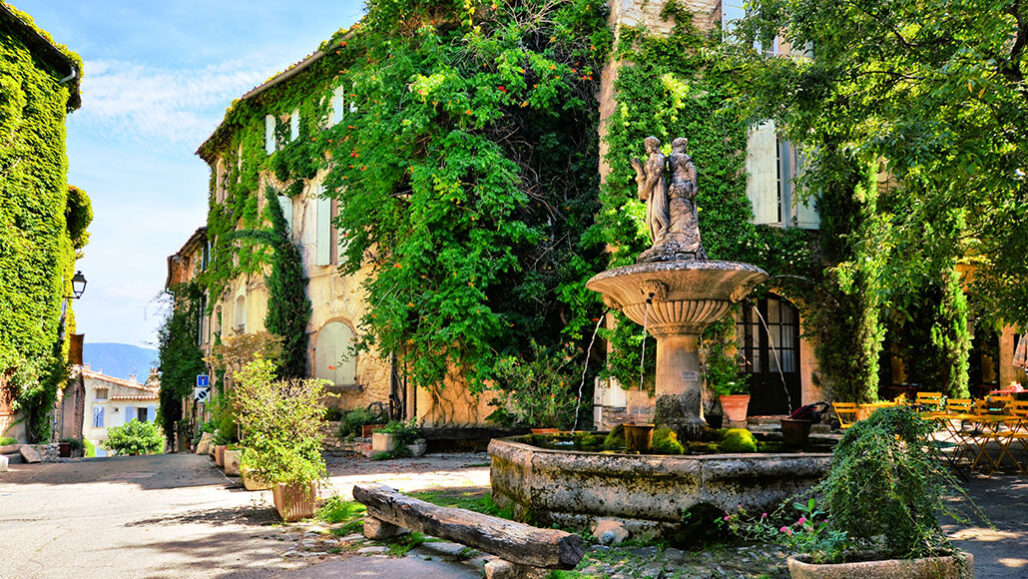
During the heat of the day, green plants transpire water. It’s sort of like sweating. This “plant sweat” helps to cool temperatures and is one reason plants can be popular on buildings in warm regions.
jenifoto/iStock /Getty Images Plus
In the summer of 2019, a blistering heat wave swept across Europe. France was particularly hard hit. In some places, the temperature hit 46° Celsius (115° Fahrenheit). More than 1,400 people died, some in their own homes — buildings that were never designed to withstand the intense heat that has arrived with climate change.
A year earlier, a heat wave in Montreal, Canada killed 66 people. Eight in every 10 of them died in their homes. Meanwhile in the United States, more than 600 people die from extreme heat every year. Like those in France and Montreal, many of them die in homes built for cooler climates.
All across the world, climate change is delivering on its promise to bring hotter, longer summers. While heat kills everywhere, buildings in northern temperate regions are particularly bad at keeping the people inside cool.
Instead, buildings rely on air conditioning, which makes outdoor temperatures even hotter. That’s because air conditioning works by taking heat from inside and blowing it outside. This increases temperatures for people outdoors and for those who live or work in buildings without air conditioning.
Plus, the fossil fuels used to make the electricity that powers air conditioners produce greenhouse gases, making climate change worse.
Air conditioning, in other words, is not a sustainable solution. And there’s no easy answer for how to keep people cool in the increasingly worse heat waves brought about by climate change. But there’s plenty of ideas for how people can stay cool. The first step: Look to the South.
Paint your roof
People living in places such as northern Europe, Canada and the United States could learn a thing or two from countries in the tropics, says Kurt Shickman. He is executive director of Global Cool Cities Alliance, based in Washington, D.C. This group helps cities around the world design cooler buildings and outdoor spaces.
Reflective roofs and walls is one most effective and least costly ways to cool a building, notes Shickman. It can be as simple as painting them a very light color such as white, to reflect sunlight.
“In India, people repaint their roofs every year, and it’s super cheap,” he says. “When you do that across a line of buildings, you can have a pretty significant reduction in temperature. We’re talking 2.8 to 5.5 degrees Celsius [5 to 10 degrees Fahrenheit cooler].”
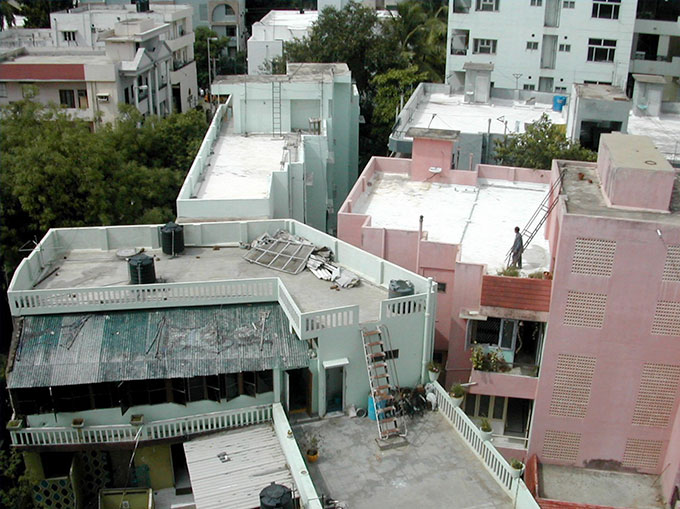
By contrast, roofs and walls in northern cities are often darkly colored. This absorbs heat and transfers it to the building.
A small experiment can help you feel the effect for yourself, says Shickman. Put a piece of white paper and a piece of black paper in the sun on a hot day. The same amount of sunlight is hitting each. But the black piece will absorb the sun’s radiation while the white piece reflects it. After a few minutes, the black one will be warmer to the touch.
You don’t necessarily need to paint your roof white to get this effect. In places where roofs are traditionally dark, you can keep the color. That’s because researchers have developed new reflective roofing materials, says Shickman.
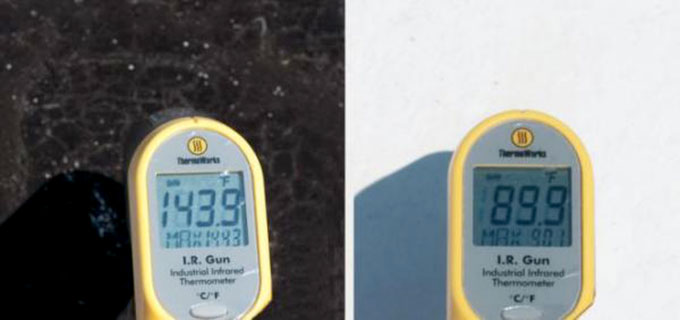
Scientists at Lawrence Berkeley National Laboratory in California and Oak Ridge National Laboratory in Tennessee, for example, have developed reflective asphalt shingle, metal and tile roofing materials. Even though they are dark-colored — green, brown, blue, red — they still keep their cool.
How? It starts with understanding that sunshine is made up of three different wavelengths of light: ultraviolet, visible and near-infrared (In-fruh-RED). The human eye only needs sees visible wavelengths. About half of the sun’s energy is invisible near-infrared light.
Traditional dark roofs absorb all three types of light. But those made from the new roofing materials reflect the near-infrared light. With about half the sun’s light bouncing back into space, these roofs don’t heat up nearly as much as those covered with traditional roofing materials.
What about when winter comes to northern cities? After all, despite rising temperatures, winter can still be cold in the North. Is it a good idea to have a reflective roof when you want to keep your home warm?
Yes, say scientists at Lawrence Berkeley National Laboratory. The extra energy it takes to heat a building with a reflective roof in the winter is less than the energy it takes to cool the same building in the summer, they found. Plus, if a roof is covered with snow, its color doesn’t matter because its surface will be white.
Green your building with plants
Another lesson from the tropics comes from the southeast Asian city-state of Singapore. In 2009, its government decided it would pay for up to half the cost of roof and wall gardens. (Wall gardens consist of plants in some kind of container — a pot or a narrow box — attached to a wall.) The move was motivated in part by the fact that plants absorb carbon dioxide, a greenhouse gas.
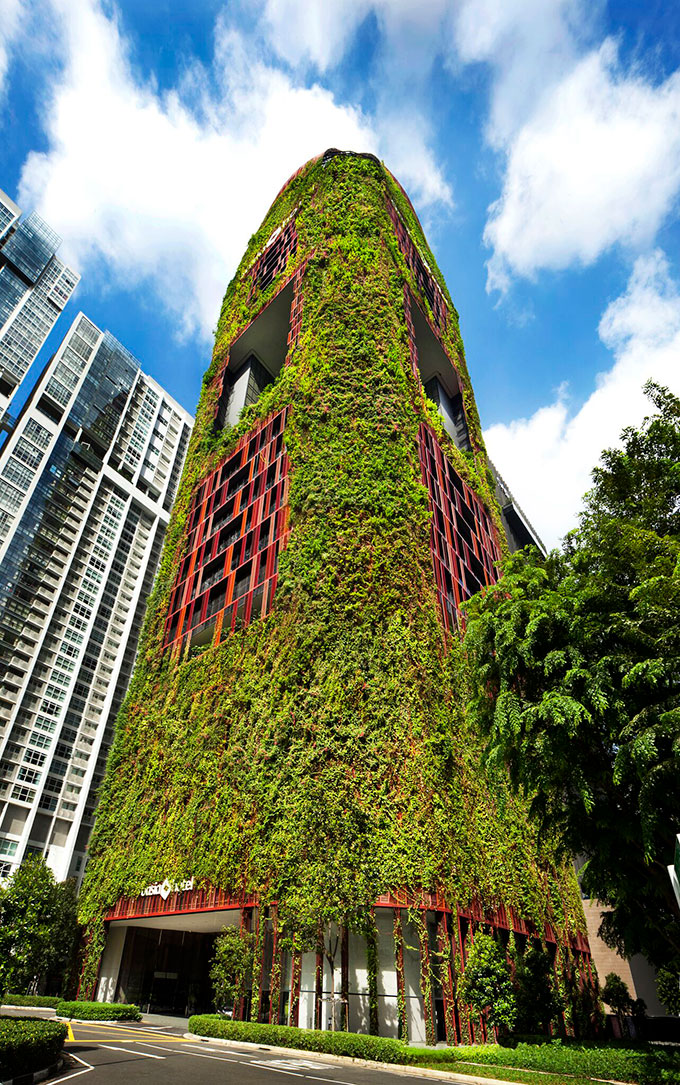
Greenhouse gases trap energy from the sun and cause temperatures to rise. Burning fuel to drive cars, heat homes and run factories releases even more greenhouse gases into the air. This leads to rising average temperatures across the globe.
Since launching, Singapore’s program has helped to green more than 110 buildings. One of them is the Oasia Hotel Downtown. Architect Hong Wei Phua designed the high-rise building with four garden terraces — on the 6th, 12th and 21st stories, plus the roof. Because the terraces are open on all sides, they allow air to flow across them naturally. This helps keep the building cool and reduces its need for air conditioning.
The building also can support vines that grow all the way up its sides. “The secret is that every story has a ring of planters,” Hong Wei says. “All the plants need to do is climb one story, not from the ground all the way up to the 27th floor.”
The vines are accessible on every story as well. Behind the ring of planters, there is an inner “catwalk” ring that gardeners can use for inspecting and caring for the plants.
Of course, Singapore has a tropical climate that supports year-round greenery. But even in northern climates, where plants go dormant each winter, green roofs and walls are possible, says Liat Margolis. As a landscape architect, she studies the environmental impact of green roofs and walls. Margolis works at the University of Toronto in Canada.
How plants cool
Rooftop plants do not directly cool a building. Instead, as they transpire water during the heat of the day they cool the surrounding air. Margolis says it’s “just like how our bodies sweat through pores in our skin.”
When the sun shines, plants open their stomata (Stow-MAH-tuh). These are tiny openings on a leaf’s surface. Water passes through them into the air. As that water turns to vapor, it cools the air.
No one knows how many green roofs it might take to cool an entire city. There are very few studies at that scale. But Margolis and her team do know which plants, soils and irrigation systems offer the most effective cooling in Toronto. Sedum (SEED-uhm) plants in well-watered organic soil are champion coolers. Sedum is a low-growing, fleshy plant with small overlapping leaves and yellow, white or pink flowers.
Her team experimented with different test beds of plants on the fifth floor of a university building. Over the course of two growing seasons, the air just above the sedum plants in organic, watered soil was 2 degrees Celsius (3.6 degrees Fahrenheit) cooler than the air above unwatered grasses and wildflowers growing in inorganic soil.
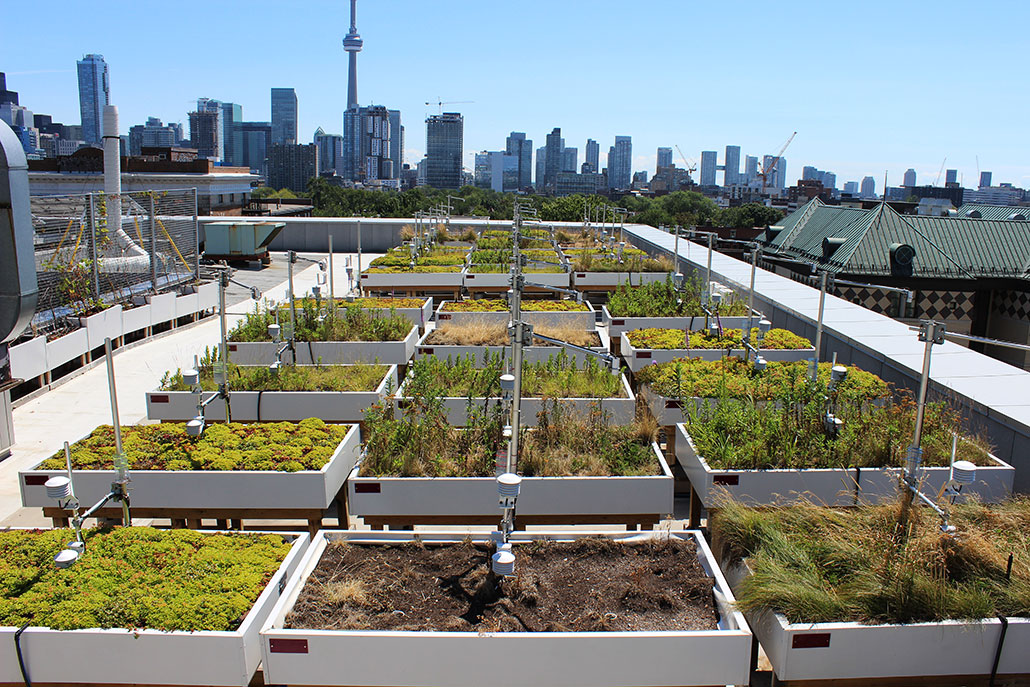
One reason is that the sedum plants tend to spread and cover the entire surface of the test bed. Rich organic soil and regular watering makes the plants grow even thicker.
Grasses and wildflowers don’t spread as much. When grown in poor soil and watered only by rain, they will thin out. During dry months, they may disappear altogether.
Margolis showed the cooling effect of plants comes from how much of an area they cover, not their biomass (BYE-oh-mass). Biomass is the quantity (mass) of living matter.
For wall-growing plants, species matter, too. Grape vines and Virginia creeper vines are among the best, Margolis finds. That’s because when they go dormant in the winter, their stems don’t wither away. Later, when spring comes, the vines don’t have to take time to grow stems and then leaves. Instead, their leaves quickly cover walls and begin the work of transpiration.
Using the same fifth-floor rooftop, Margolis and her team grew the vines up sections of a one-story wall. They compared the air temperature just above the vines’ surface to that just above the bare wall. Vines made the air 3 degrees Celsius (5.4 degrees Fahrenheit) cooler.
But planting vegetation on buildings and keeping it healthy isn’t cheap, Margolis points out. And it can take a lot of work. There may be simpler strategies.
In with the old, out with the new
Sometimes the secret to a cooler home can be as simple as reminding ourselves of architectural strategies from the days before air conditioning, says Megan Davies Wykes. An engineer at the University of Cambridge in England, her work focuses on the field of fluid dynamics. That’s the study of liquids and gases in motion.
Davies Wykes is particularly interested in how air (a collection of gases) moves through a room. She experiments with various models to get air to flow naturally across a room. She wants to help architects design homes, schools and workplaces with cooling ventilation as one way to lower a need for air conditioning.
There are two ways to do this, she says. The first relies on wind. As winds blow, they push air against a building; this creates an area of high pressure. The opposite side of the building is sheltered from the wind. Here, the air pressure is lower.
Fluids and gases, including air, naturally move from high-pressure areas to low pressure ones, notes Davies Wykes. If the wind is blowing and there are open windows on opposite sides of a room, air will move from the high- to the low-pressure sides. This creates a cooling breeze as that air passes through the room.
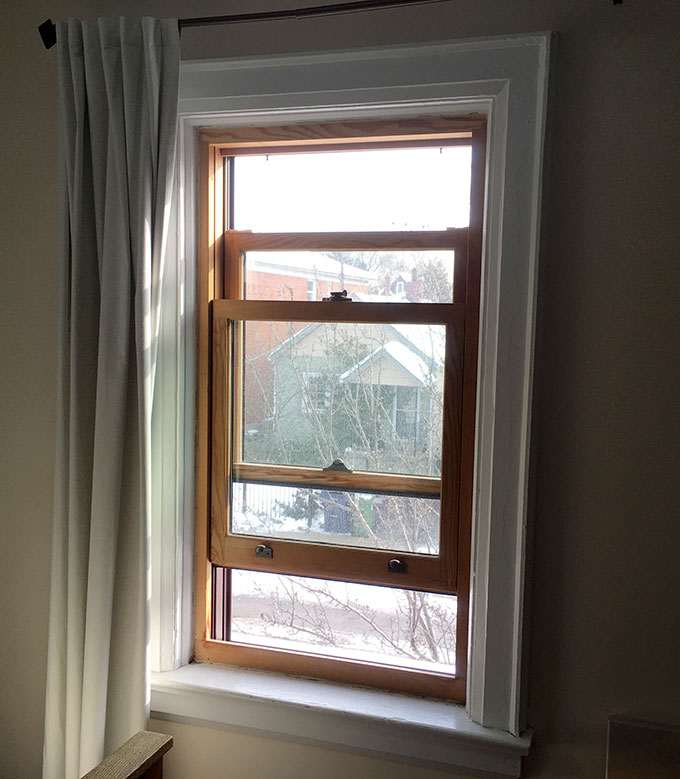
Many homes built before air conditioning have rooms or hallways with windows directly across from each other. As long as no big objects block the way, this cross-ventilation allows the breeze to flow through rooms.
“Windows on two adjacent walls works, too, but not as well as windows directly across from each other,” Davies Wykes explains.
But what if there is no wind? Anyone who has tried to cool down on a summer night by opening a window will know that without wind, there is no breeze. That’s when you can turn to the second way to create ventilation. This involves taking advantage of the temperature difference between indoor and outdoor air. While the breeze is not as strong as one driven by wind, it can still make a difference, says Davies Wykes.
Warm air rises and creates a vacuum. This in turn pulls cooler air up, creating a breeze. But inside a room, warm air rises to the ceiling and gets stuck. There must be an opening high up on the wall or the ceiling for warm air to escape and create the vacuum needed to pull air in and set up a breeze. A high window or skylight is ideal. You also need a window lower down on the wall to pull in that cooler air from outdoors.
Davies Wykes says old-fashioned double-hung windows are a good way to generate this kind of breeze. These are windows with one sash (glass-filled frame) that slides up and another that slides down. This allows you to create an opening higher up on the wall, and another lower down.
“We used these techniques for centuries, but we’ve forgotten about them,” she says.
Yet even if your building is poorly designed or has no vegetation, there are ways to keep cool during a heat wave. Shickman, of the Global Cool Cities Alliance, suggests closing blinds or curtains during the day to block out the warming sunlight. Make sure, too, that they are a light color on the side facing out so that they reflect sunlight.
Computers, TVs and other electronics generate a lot of heat when sitting idle or even when turned off. So unplug them when not in use, says Shickman. And when possible, don’t use your stove or oven — eat a cold meal instead.
If you’ve done all these things and your home is still uncomfortably hot, don’t beat yourself up about having to use your air conditioner. Remember, heat can kill.
“I live in Washington, D.C., and try not to run my air conditioning much,” says Shickman. “But I’m a big, bearded guy with small kids, so sometimes I just have to.”







